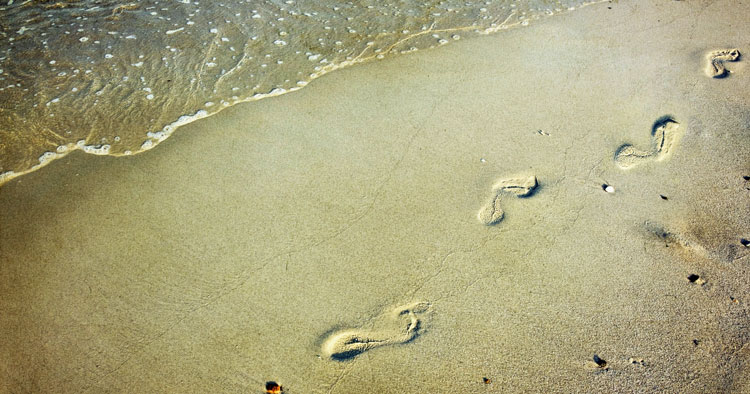Injury Rehabilitation and Training, Sports Injuries and Management
Barefoot Running: Is It Good For Me?
Barefoot Running Is The Not So New Running Craze
Barefoot running is as it suggests in its most basic form running without shoes. The majority of barefoot runners we see in our Sydney Physio practice are tending to run in thin-soled shoes zero drop shoes such as the Vibram Five-fingers, New Balance minimus or TSLA , Vivobarefoot shoes. Running without shoes is considered by many to be the natural way of running and has become very popular in the past decade or more as people are throwing away their classic running shoes opting for a more minimalist approach.
Advocates of barefoot running put forward the argument that for decades we have been running in “traditional” running shoes, shoes engineered to help the runner run longer and faster as well as reducing injury risk. However, despite all these so called technological advances, the added gel, the boosted cushioning, the targeted support and all the billions of dollars spent by consumers on running shoes, the number of injuries among the running population continues to grow. All whilst these large mega-corporations line their pockets. Pro-barefoot running enthusiasts claim that moving to a minimalist running approach has many benefits through correcting running form, encouraging a forefoot strike as apposed to a heel strike which results in fewer injuries.
The Benefits Of Running Without Shoes Are Yet To Be Scientifically Proven
Encouraging the runner to strike on their forefoot through removing their traditional running shoes which as a result of all the added cushioning has seen runners evolve to strike with somewhat more of a heel strike action. Barefoot running is suggested to reduce the number of common injuries associated with running by restoring the bodies natural running gait and strengthening the lower limbs and feet.
These claims of the barefoot approach however are not backed by research, studies are yet to conclusively reach any consensus on the benefits of this form of running in reducing injury risk over running in regular running shoes. And the current suggestion that I am aware of from a research point of view is that barefoot running does not reduce an individuals overall risk of injury it simply creates a shift in the type of injury people are likely to suffer. Where barefoot runners are more likely to suffer for stress fractures of the foot, achilles and calf complaints where as runners in a classic running shoe are more likely to complain of knee pain and the more hind-foot strike tends to encourage high knee loading forces. So, despite the claims around running without shoes strengthening the muscles in your legs and feet, improving your running form and ultimately helping reduce many common running injuries such as shin splints, plantafascititis, achillies tendinopathy… There isn’t actually the evidence to back up this claim.
Should I Run With, Or Without Shoes?
Barefoot running is somewhat a controversial and divisive topic in the running community. Splitting people down the middle, with sometimes runners and practitioners alike having very strong options either one way or the other. I myself am a bit more of a fence sitter. And although there is no doubt for me, that barefoot running is not suitable for all runners and there is no single footwear approach that is right for all runners. It doesn’t mean that just because you read the book “Born To Run” or because your running partner, or your mates girlfriends brothers boss is a barefoot runner and claims it cured their Achilles problem won’t necessarily indicate that barefoot running will “work” for or suit you. Running with less weight on your feet can improve your running efficiency and decrease your running times, however running “free” of shoes forces the foot to impact the ground differently, exerting different forces on the foot can be a precursor to other sorts of injury.
Barefoot Running: A Variable Change Like Any Other
Just as with changing your training surface, mileage or running speeds are variable that should be altered methodicaly allowing appropriate time for tissue adaption, changing your footwear is a variable that should be approached in the same way. Any significant changes to training introduced incorrectly regardless of their potential longer term benefit can subsequently be an added injury risk. Introducing barefoot running inappropriately due to the surface the change is introduced, or the rapid nature with which any change is applied can risk puncture wounds and infections, as well as many potential musculoskeletal injuries. The most basic rule that should be applied is that any significant change in running footwear, barefoot or otherwise needs to be done in a sensible, structured and gradual way ideally following professional advice.
Disclaimer: Sydney Physio Clinic does not endorse any treatments, procedures, products mentioned. This information is provided as an educational service and is not intended to serve as medical advice. Anyone seeking specific advice or assistance on running should consult his or her general practitioner, podiatrist, physiotherapist or otherwise appropriately skilled practitioner.



Running in padded, motion controlled etc. etc. shoes are what’s not scientifically proven.
Nike has published studies showing that a certain new show reduced injuries by 50% compared to their best selling shoe, which had a whopping 30% injury rate. Injury rates have not budged despite constant “evolutions” in running technology.
One of the big wigs at Nike back in the day has said themselves their biggest mistake was introducing the heel raise on running shoes. It was a stopgap because everyone was used to non-functional (aesthetic purposes only) raised heel shoes in day to day work, and accustomed to a lifetime of shortened calves. Instead of actually resolving this biomechanical problem, the industry and hence runners took the shortcut of raising the heel – so as is expected typical human nature, anyone trying to transition to minimal shoes does it too quickly and aggressively, resulting in injuries.